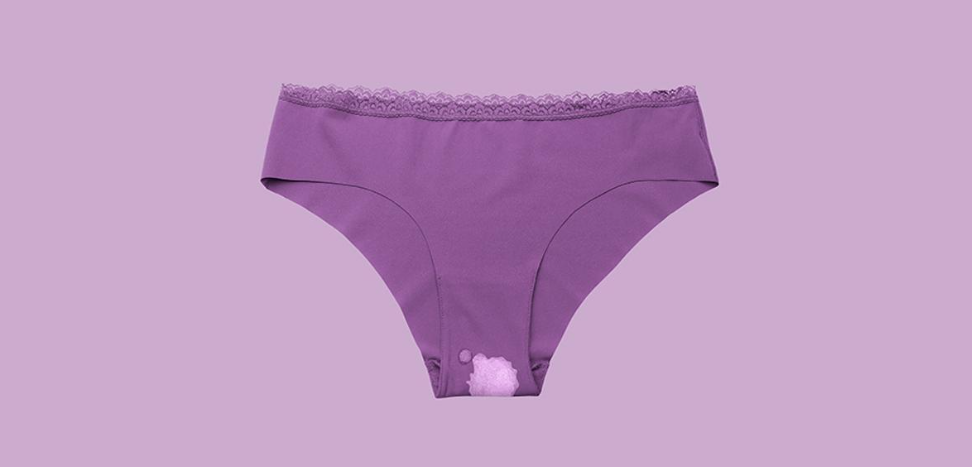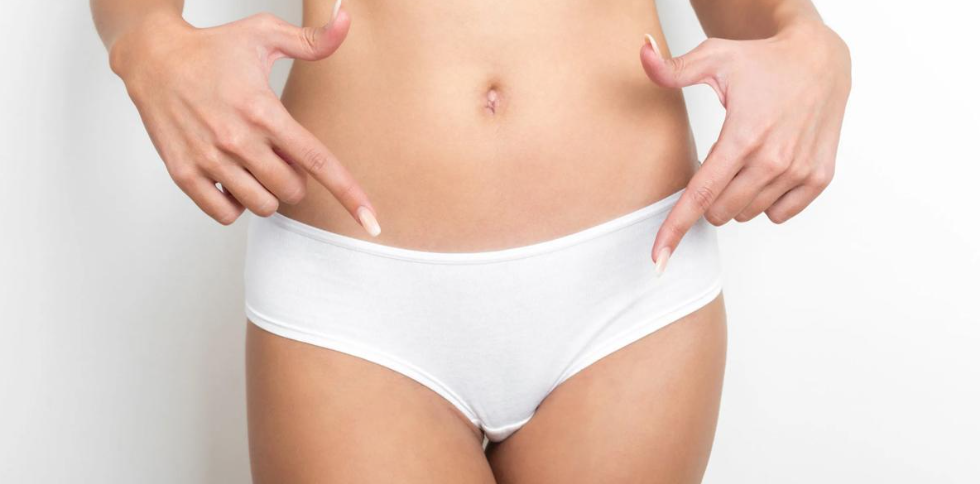
Seeing yellowed, bleached-out stains marking the crotch of your underwear is a frustrating yet common occurrence many women face. While small discharge stains now and then are no big deal, having your favorite panties frequently fall victim to discoloration is less than ideal.
The inconvenient truth is that vaginal discharge, while entirely healthy and normal, can be acidic enough in nature to eat away at fabrics over time or leave stubborn stains in its wake. The liner of your underwear falls directly in the discharge’s path as it exits the vagina daily.
But before you resign yourself to a lifetime supply of stained skivvies, rest assured there are ways to curb discharge dyeing everything yellow in its path! Let’s review some smart strategies to stop vaginal discharge from bleaching your underwear once and for all.
Table of Contents
- 1 First, What Exactly Is Vaginal Discharge?
- 2 What’s Considered “Normal” For Discharges?
- 3 Tip #1: Choose Stain Resistant Fabrics
- 4 Tip #2: Choose Strategic Styles That Limit Transfer
- 5 Tip #3: Change Underwear More Frequently
- 6 Tip #4: Rinse Out Discharge Before Laundering
- 7 When to See Your Gynecologist
First, What Exactly Is Vaginal Discharge?
Before discussing approaches to curb underwear staining, it helps to understand exactly what vaginal discharge is in the first place.
Vaginal discharge is an umbrella term referring to any of the fluids produced by glands and mucus membranes in the vulva, vagina, and cervix. Its primary purpose is to flush away dead cells, debris, and excess bacteria to keep the vagina healthy, lubricated, and pH balanced.
Discharge amounts and textures vary throughout a woman’s menstrual cycle in response to hormonal fluctuations. Consistencies can range from thin and milky to thick and gummy during fertile and nonfertile stages. The average vagina releases around 4 ml of fluid daily but every woman’s baseline differs.
In composition, discharge contains water, electrolytes, oils, enzymes, good bacteria, mucus, and cells sloughed from vaginal walls. Trace amounts of electrolytes like sodium and potassium make discharge mildly acidic overall, especially right after menstrual bleeding ceases.
As discharge exits the vagina and makes contact with underwear, oxidation occurs. When acidic discharge reacts with air, it takes on a yellow or orange tint. This is what leaves behind the dreaded stains.
What’s Considered “Normal” For Discharges?
Now that we know what comprises healthy discharge, what visual cues should you monitor day to day? Tracking consistency and color changes can spotlight brewing infections needing treatment promptly.
Clear & Stretchy: Seen most often during ovulation as estrogen prompts cervical mucus production to assist sperm transport. No odor, no risk.
Thick & White: Prevalent after and between periods. This paste-like discharge helps prevent unhealthy bacteria from entering the vagina.
Clear & Watery: Constant, light wetness maintains vaginal pH between 4 – 4.5. Discharge should never feel or appear soaked.
Yellowish: Normal when discharge dries on fabric and simply oxidizes. Increase fluids if heavily yellow.
Green & Gunky: Potentially indicates an infection when paired with a foul odor, burning, or irritation.
Gray & Foul: Another red flag suggesting the presence of bacteria imbalances or sexually transmitted illnesses.
Pinkish: Some light spotting after intercourse is fairly common but take note of persistent changes.
While staining may be annoying, pale yellow or orange-tinged discharges are typically no major cause for concern and stem from healthy mucus production. However, if you observe odd colors like green or gray regularly or notice other troubling symptoms, do make an appointment with your gynecologist promptly to rule out infections requiring antibiotic treatment.
Now let’s explore some practical techniques to stop vaginal discharge from bleaching your favorite underwear when amounts grow more heavy and bothersome.
Tip #1: Choose Stain Resistant Fabrics

One of the easiest switches to make is gravitating towards underwear options explicitly labeled stain or moisture-resistant on the tag. Synthetics like polyester/spandex blends naturally repel fluids better than natural weaves like cotton. Some also boast an antimicrobial treatment to inhibit bacterial growth.
Within the realm of moisture-wicking athletic wear, brands like Under Armour, Nike, and Adidas excel at preventing sweat and bodily fluid retention thanks to strategically woven fabrics that “wick” dampness away from the skin barrier to evaporate. Look for these material blends in underwear designed for periods and incontinence specifically.
The other key advantage of moisture-resistant fabrics is that they dry extremely quickly and don’t hold onto odors. A brisk rinse restores them to a fresh state. Compared to cotton which requires lengthy laundering, modern textile engineering helps inhibit staining and yellowing markedly.
Tip #2: Choose Strategic Styles That Limit Transfer
When shopping for underwear, be choosy about styles that inhibit direct fluid transfer in the first place. For example, bikini and hipster cuts with full coverage backs and gusset cotton panels place an extra fabric layer between discharge and clothing. This creates more absorption before discharge permeates outerwear.
In contrast, skimpy thongs allow fluids to travel along the central strip directly to jeans or dresses giving less buffer space for absorption. Steer clear of thong or g strings when battling heavy flows.
For nighttime insurance against leaking, period-proof underwear now comes with built-in leak guards to lock in several teaspoons of fluid without visible staining. These can provide a safety net on heavy days.
Tip #3: Change Underwear More Frequently
This tactic falls under the “ounce of prevention is worth a pound of cure” category when working to stop vaginal discharge from bleaching your underwear. Simply put, the more often you swap out underwear throughout the day, the less opportunity discharge has to accumulate and seep into the fabric fibers.
Make it a habit to start your day with a fresh pair even if your current pair looks perfectly clean. This removes any invisible residue build-up or oxidation left overnight from air exposure. For those with very heavy daily discharge, consider a mid-day change as well, especially on sweaty summer days.
Having backup pairs makes it easier to maintain this routine. That way you’ll always have a pair ready to swap in after exercise or long sedentary stints when discharge production ramps up.
Tip #4: Rinse Out Discharge Before Laundering
Here’s an extra laundering step you likely didn’t know about! Rinsing underwear in cold water promptly after removal actually helps discharge from the setting into the fabric aggressively. The same concept applies to getting blood stains out of clothes – cold water prevents protein bonds in fluids from coagulating as readily.
To leverage this trick, keep a small laundry bin in the bathroom whenever possible. After underwear changes, give soiled pairs a quick hand rinse in cold tap water before tossing them in the regular hamper. Then launder as normal in your machine, either in cold water delicate cycles or hot water washes depending on the material.
You’ll be amazed that this simple pre-removal measure dramatically reduces how intensely discharge stains fabric over the long run. It takes a little effort but prevents permanent bleaching.
When to See Your Gynecologist
Most mild to moderate vaginal discharge doesn’t warrant medical intervention (beyond preventing laundry woes!). However, if you observe any dark yellow, green, or grey discharges, especially with other symptoms like itching, pain, or clumping, do make an appointment with your gynecologist right away.
Likewise, if staining seems to suddenly worsen despite preventative steps or you notice bleeding between periods, bring it up at your annual well-woman exam. Significant changes in consistency, color, or volume can sometimes indicate hormonal conditions or infections needing attention.
But when discharge falls within normal ranges, have confidence that picking breathable fabrics, frequently changing into clean undies, and rinsing promptly will collectively stop vaginal discharge from bleaching your underwear frequently. Give these simple hacks a try – your underwear drawer will thank you!


